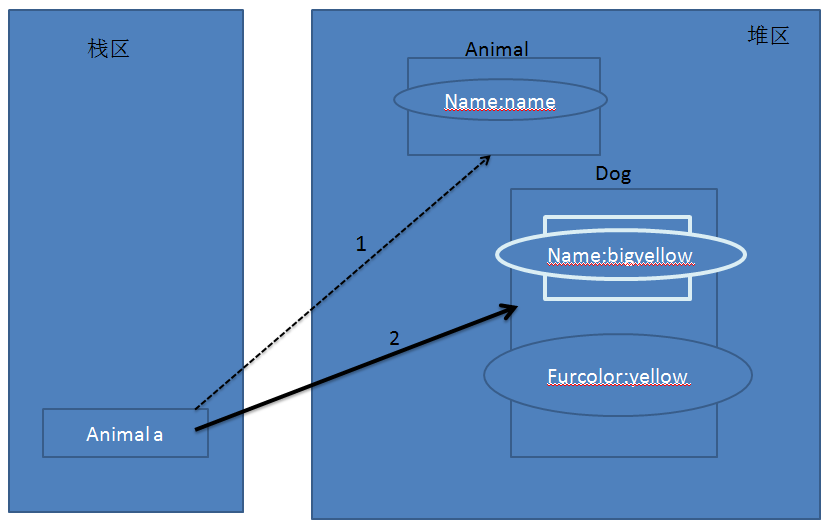对象转型(casting)
先来记录下包含的知识点:
- 一个基类的引用类型变量可以“指向”其子类对象
- 一个基类的引用不可以访问其子类对象新增加的成员(属性和方法)
- 可以使用引用变量instanceof类名来判断该引用型变量所“指向”的对象是否输入该类或该类的子类
- 子类的对象可以当做基类的对象来使用 称作向上转型(upcasting),反之称为向下转型(downcasting)
举一个例子,先定义三个类
class Animal
{
public String name;
Animal(String name)
{
this.name=name;
}
}
class Cat extends Animal
{
public String eyesColor;
Cat(String n,String c){
super(n);
this.eyesColor=c;
}
}
class Dog extends Animal
{
public String furColor;
Dog(String n,String f){
super(n);
this.furColor=f;
}
}主程序
class TestCasting
{
public static void main(String[] args)
{
Animal a =new Animal("name");
Cat c=new Cat("catname","blue");
Dog d=new Dog("dogname","black");
System.out.println( a instanceof Animal);//true
System.out.println( c instanceof Animal);//true
System.out.println( d instanceof Animal);//false
System.out.println( a instanceof Cat);//false
a=new Dog("bigyellow","yellow");
System.out.println( a.name); //bigyelow
//System.out.println( a.furColor);
System.out.println( a instanceof Animal); //true
System.out.println( a instanceof Dog); //true
Dog d1=(Dog)a;
System.out.println(d1.furColor);//yellow
}
}
其他的基本没有问题,下面来重点分析一下这一句代码
Animal a =new Animal("name");
a=new Dog("bigyellow","yellow");
System.out.println( a.name); //bigyelow
//System.out.println( a.furColor);先上图
- 先在栈区压入一个Animal a ,同时在堆区新建一个Animal对象,a指向堆区的Animal
- 在堆区新建一个Dog对象
- Dog内部先调用基类构造方法
- 初始化自己的字段
- 1的时候,a指向Animal,2的时候,a指向Dog对象
- 这个时候,a只能访问Dog中的基类Animal对象,对子类的其他细节屏蔽掉了 【一个基类的引用不可以访问其子类对象新增加的成员(属性和方法)】























 449
449

 被折叠的 条评论
为什么被折叠?
被折叠的 条评论
为什么被折叠?








